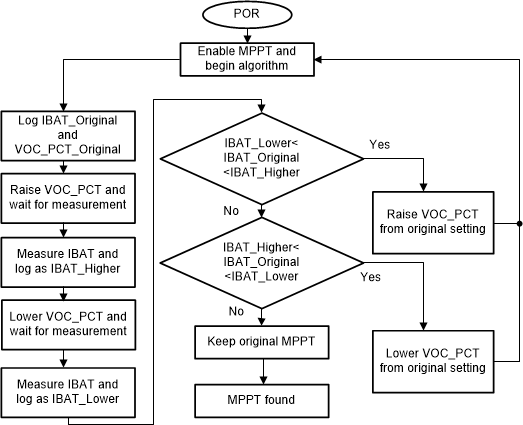SLUAAI1 December 2021 BQ25798
2.5 Using Charge Current for Algorithm Improvement
The second MPPT algorithm builds upon the first using charge current measurement. First, one K-factor is selected and tested. After charging resumes, the charging current is recorded. Next, another K-factor is chosen and the charge current following the change is evaluated. This process is performed iteratively across all K-factors. Whichever K-factor gives the highest charge current optimizes the input power the most. With a nearly constant battery voltage in the short term, the charge current is a benchmark for the output power.
Due to the presence of the VOC_PCT register bits and the ADC in the BQ25798, both the K-factor selection and the charge current observation are realizable. A sample algorithm for finding the MPPT with one power maximum for the BQ25798 is demonstrated in Figure 2-3. In the sample algorithm, a VOC_PCT setting above and below the original VOC_PCT setting is tested each time and whichever of the three settings yields the most charge current decides the next steps.
 Figure 2-3 Sample BQ25798 MPPT Algorithm with ADC
Figure 2-3 Sample BQ25798 MPPT Algorithm with ADC